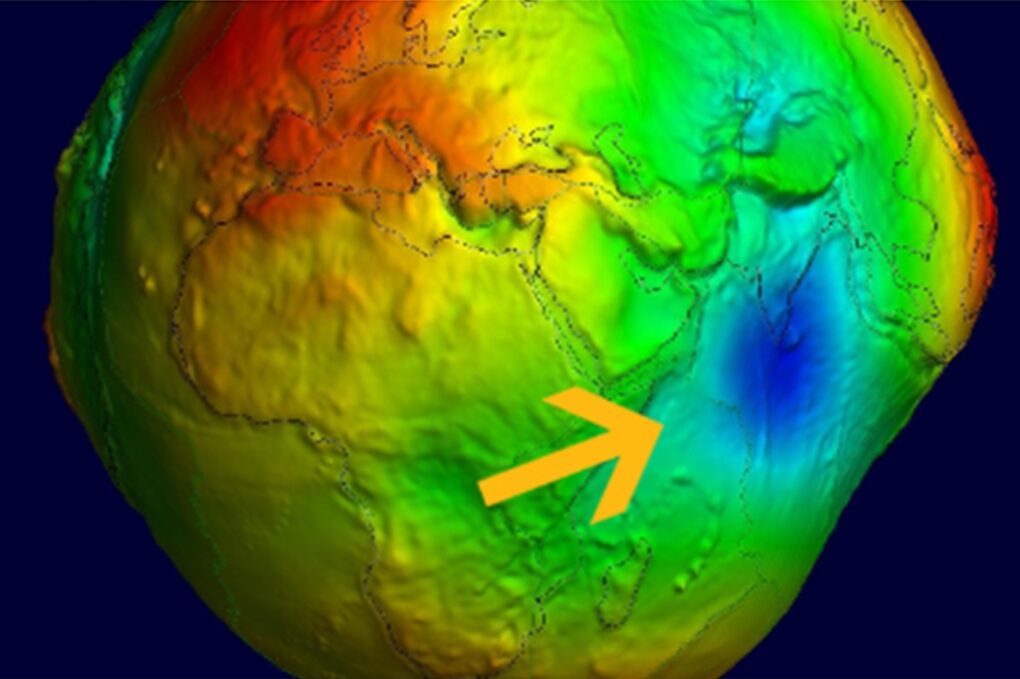Giant ‘Gravity Hole’ in Indian Ocean possibly caused by ancient sea that sank millions of years ago

A huge, mysterious so-called “Gravity Hole” underneath the Indian Ocean might have been formed from the remnants of an ancient sea, according to a new study.
Researchers recently offered the possible origins of a massive expansive depression at the bottom of the sea — known as Earth’s most notable gravity anomaly.
The new study makes the case that the Indian Ocean geoid low (IOGL) is made up of slabs from the long-lost Tethys Ocean that sank within the planet millions of years ago, according to Scientific American.
The IOGI spans about 2 million square miles and is more than 600 miles below Earth’s crust, according to Science Alert.
And according to the new study published in Geophysical Research Letters, it could have been caused when the Tethyan slabs “perturbed” the African Large Low Shear Velocity province, which is also known as the “African blob” leading to plumes beneath the Indian Ocean.
“These plumes, along with the mantle structure in the vicinity of the geoid low, are responsible for the formation of this negative geoid anomaly,” lead author Debanjan Pal and Attreyee Ghosh wrote in the study.

The Tethys Ocean was around tens of millions of years ago, separating the mega-continents of Gondwana and Laurasia, according to Scientific American.
There have been different theories to explain the gravitational anomaly.
“All these [previous] studies looked at the present-day anomaly and were not concerned with how this geoid low came into existence,” the study states.
The results were based on more than a dozen computer models, Scientific American reported.

Geophysicist Shijie Zhong told the outlet the study offers an interesting take that could better understand the IOGL.
“We like to talk about the positive gravity anomalies, such as the superplumes over Africa and the Pacific,” he said. “But the geoid low in the Indian Ocean is one of the most profound gravitational anomalies on our planet.”
The gravity hole likely took its current shape about 20 million years ago and will likely last millions more, Pal reportedly said.















